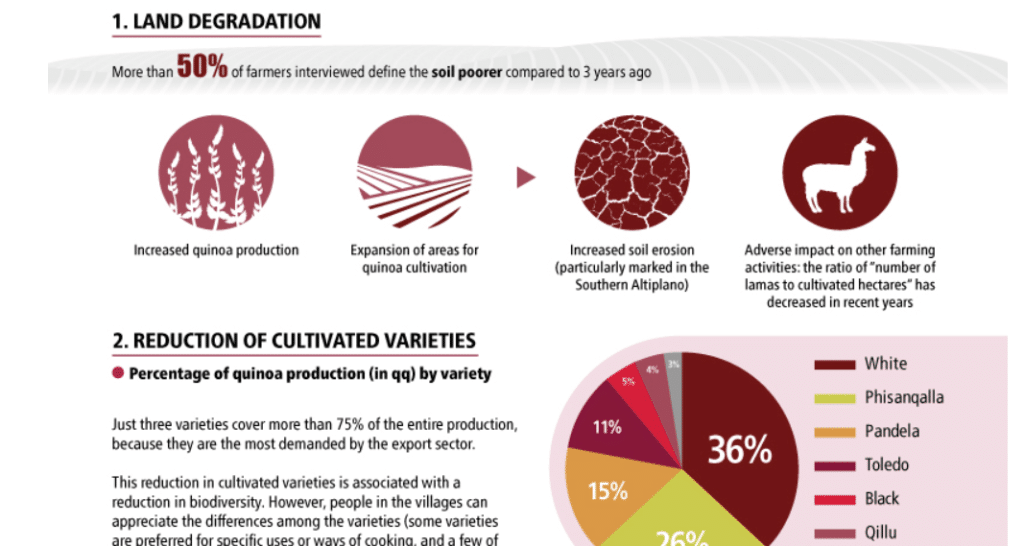In context of his PhD thesis, Enrico Avitabile in collaboration with the FAO publishes the following infographic which visualizes the effects of the quinoa boom on family farmers in the Bolivian Southern Altiplano.
http://www.fao.org/resources/infographics/infographics-details/en/c/225070/
The conclusions that can be drawn from the 100 surveys with farmers in the producing area around the salt flats in Southern Bolivia suggest that there are both positive and negative effects of the quinoa boom that has started in 2008. Amongst the benefits are that the current price level (interviews were done in the beginning of 2013) is positively accepted by the farmers. 81% of the interviewees mention that quinoa is their primary source of income. Farmers have a higher income and have hence an easier access to credit, to additional labour and machinery and better education. Amongst the challenges is the issue of land degradation and the reduction of cultivated varieties. 75% of the quinoa grown in the area can be assigned to three varieties.
The document also raises the topic of food security: Although domestic consumption of quinoa in rural areas has decreased, the improved infrastructure and and financial situation facilitate the accessibility to a richer diet. In the urban areas of Bolivia, quinoa consumption has increased from 0.35 kg/year in 2008 to 1.11kg/year in 2012.

